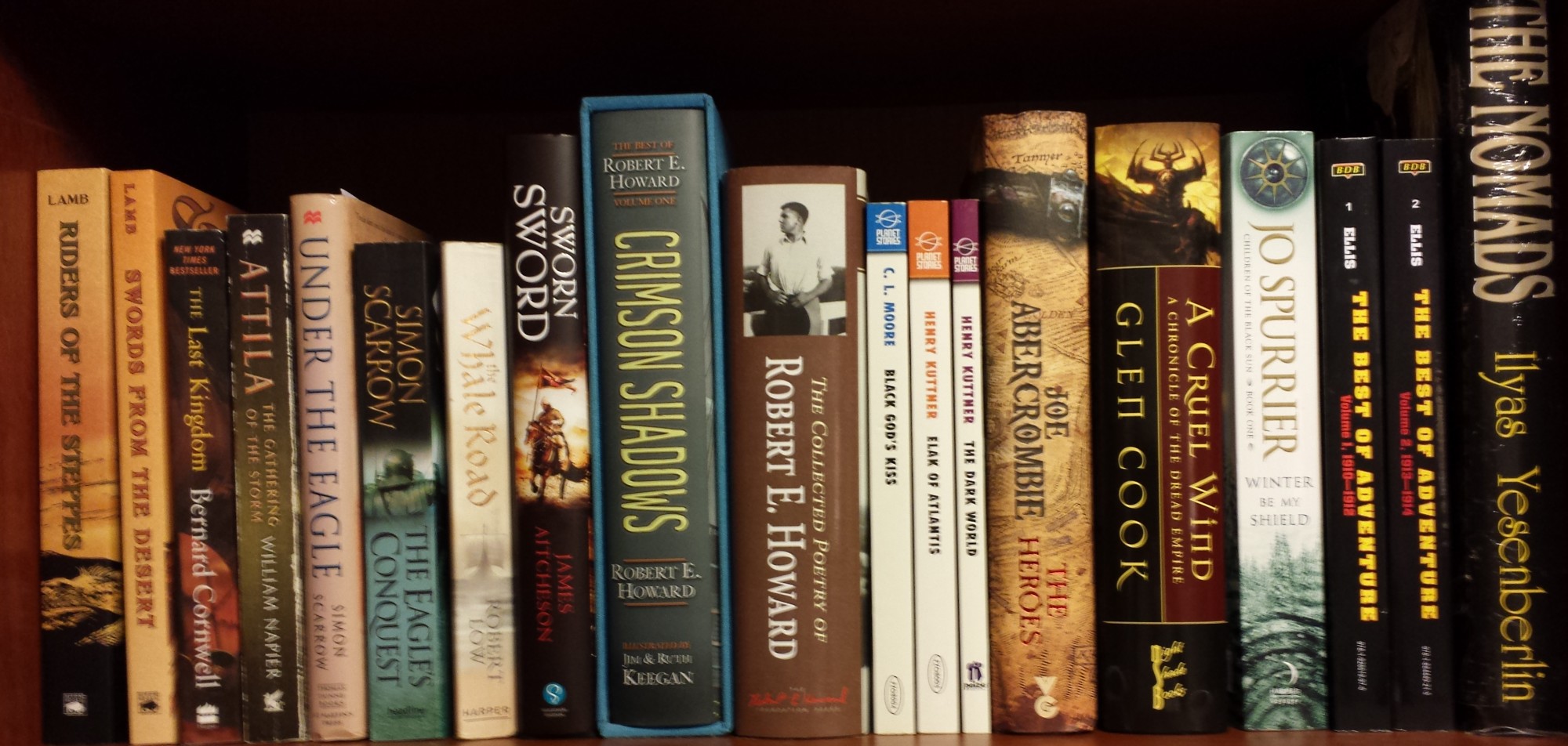It’s been quite a while since I wrote a post on Conan. All I can say, “Where did the time go?”
Anyway, there are times when you just need to get back to basics. This weekend has been one of them.
The Frazetta art for “The Scarlet Citadel”, shown at right and originally appearing on the cover of Conan the Usurper, has always been one of my favorites. Perhaps it’s because I don’t like snakes. If that were me chained up, I probably be a blubbering mass of jelly. Anyway, even though it isn’t exactly faithful to Howard’s description, it’s still a masterpiece.
“The Scarlet Citadel” was the third Conan story published in Weird Tales, following “The Phoenix on the Sword” and “The Tower of the Elephant“, although “The Frost-Giant’s Daughter” and “The God in the Bowl” were probably written before Howard wrote “The Scarlet Citadel”. (Links are to my posts about those stories.)
This story takes place during Conan’s reign as King of Aquilonia. It opens with him taking 5,000 of his knights and riding to the aid of King Amalrus of Ophir against Strabonus, King of Koth. With them, and actually the one in charge, is the sorcerer Tsotha-lanti. It’s a trap, and all of Conan’s men are killed. Conan is captured and offered his life if he will abdicate.
If you’ve read any of the Conan stories, you should know what his answer is. As a result, he’s chained in a dungeon in total darkness to wait for the giant snake in the above picture to have him for a snack.
I’m assuming most of the people reading this are familiar with the story, but there are probably one or two of you who either haven’t read it or haven’t read it recently, so I’ll not give much in the way of spoilers.
It had been a few years since I last read “The Scarlet Citadel” before I reread it the other day, and the images that had most stayed with me were the opening scene and the sequence of Conan and the snake. It was fun to refresh my memory of this tale.
Howard by this time was becoming comfortable with the character. His identity is well established. Howard’s prose is top notch. There’s a portion of the story in which Howard relates the events in Aquilonia after the population learn (falsely) that Conan is dead. Howard summarizes the series of events beautifully, painting in broad strokes the usurpation of Conan’s throne by Tsotha-lani’s pawn and giving details about the resistance of certain individuals, such as the student Athemides speaking out and having to flee the city. This is some of Howard’s better writing, although probably not his absolute best. It’s certainly better than the passages in “A Witch Shall be Born“, in which the soldier Valerius relates events to his lover Ivga.
Yet, as much as I enjoyed this story, I can’t help feel that Howard was never really comfortable with Conan as a king. While he’s still king, he spends most of the story trying to regain his throne. Most of the story that’s told from Conan’s point of view consists of his capture and adventures in the dungeon, plus the concluding portion of the final fight at the end. We never really see him in any kingly role. And even though he’s portrayed more like a ruler in “The Phoenix on the Sword” and The Hour of the Dragon, I can’t shake the impression that Howard is at his most comfortable with the character when he’s not a king. Even in The Hour of the Dragon, Conan spends much of his time traveling in order to regain his throne and even reminisces about when he was a wanderer. I know the Conan stories I’ve enjoyed the most have been those in which Conan answered to no one, even if there was a woman he was protecting.
Much of this one after Conan manages to escape consists of summaries and skips over some of the details. If filled in, those details would turn this particular adventure into a short novel. I don’t know if Howard didn’t feel as though he could write some of the details effectively or if he didn’t think he could sell Farnsworth Wright a story of that length about this relatively new character. Certainly on the surface the basic concept of Conan having to fight against an invading army here bears a strong resemblance to the basic plot of The Hour of the Dragon. Perhaps Howard felt more comfortable a few years later when he wrote Dragon, or if the character was by then popular enough to sustain a serial of that length. Of course, by the time he wrote The Hour of the Dragon, Hester’s health was in a steep decline, and he probably needed the money a novel would bring more than he did when he wrote “The Scarlet Citadel”.
“The Scarlet Citadel” is well worth the read. The action is broken up into two main parts, the first being Conan’s capture and subsequent escape, and the second relates what happens in Aquilonia while he’s gone and how he gets his throne back. It’s not one of the longer Conan stories, and it’s readily available in a number of collections.














